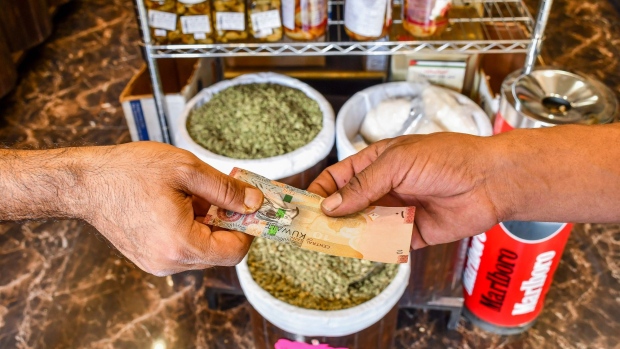Jan 31, 2023
Kuwait Sees $16.4 Billion Deficit, Looks to Boost Revenue
, Bloomberg News

(Bloomberg) -- Kuwait unveiled budget proposals that forecast a deficit for the fiscal year starting April 1, despite efforts by the OPEC member to boost revenue booked from independent state entities.
The Gulf nation is projecting a 5 billion dinar ($16.4 billion) shortfall, the Finance Ministry said Tuesday, after reducing the price it expects to get for oil to $70 a barrel and increasing spending. That compares with a 1.35 billion dinar surplus expected for the current year, revised up from a 124 million dinar deficit.
Income in 2023/24 is projected at 21.23 billion dinars, after including profit generated by government entities such as Kuwait Petroleum Corp. not historically added to the state’s budget revenue streams. That compares with 24.75 billion dinars estimated in the current fiscal year. The change is expected to be a more accurate representation of the budget’s true revenue.
Non-oil income is expected to account for 19% of total projected income, compared with around 10% in previous years. Oil revenues are expected to fall.
Spending is seen at 26.28 billion dinars, up 11.7% on the current year’s estimate. Populist laws passed by parliament are reflected in the new budget, which sees outlays including overdue payments to ministries such as electricity and water, and newly-passed laws and decisions including a move to allow civil servants to exchange vacation days for cash. The 2023/24 budget must be approved by parliament.
The ministry didn’t state how the budget gap will be financed. The country hasn’t been to the market since a debut Eurobond in 2017 due to a political dispute over borrowing.
Read More: Kuwait Cabinet Quits as MPs Push for Oil Wealth Spending
The Gulf state, home to about 8.5% of the world’s oil reserves, posted a 3 billion dinar deficit in the 2021/22 fiscal year, a drop of more than 72% on the previous year as oil prices recovered. Years of political tensions have stymied efforts to diversify the oil-reliant economy and promote foreign investment, leaving Kuwait particularly vulnerable.
Other Budget Highlights:
- Planned capex accounts for 9% of total spending
- Oil revenue is projected at 17.17 billion dinars compared with 21.3 billion estimated for the current fiscal year
- Non-oil revenue is seen at 4.1 billion dinars compared with 3.43 billion dinars. Oil income accounts for 81% of revenue.
- Oil calculations are based on a daily production rate of 2.68 million barrels per day; Kuwait’s breakeven point is $92
- Wages and subsidies account for 80% of the budget
©2023 Bloomberg L.P.






